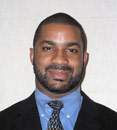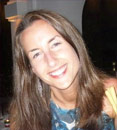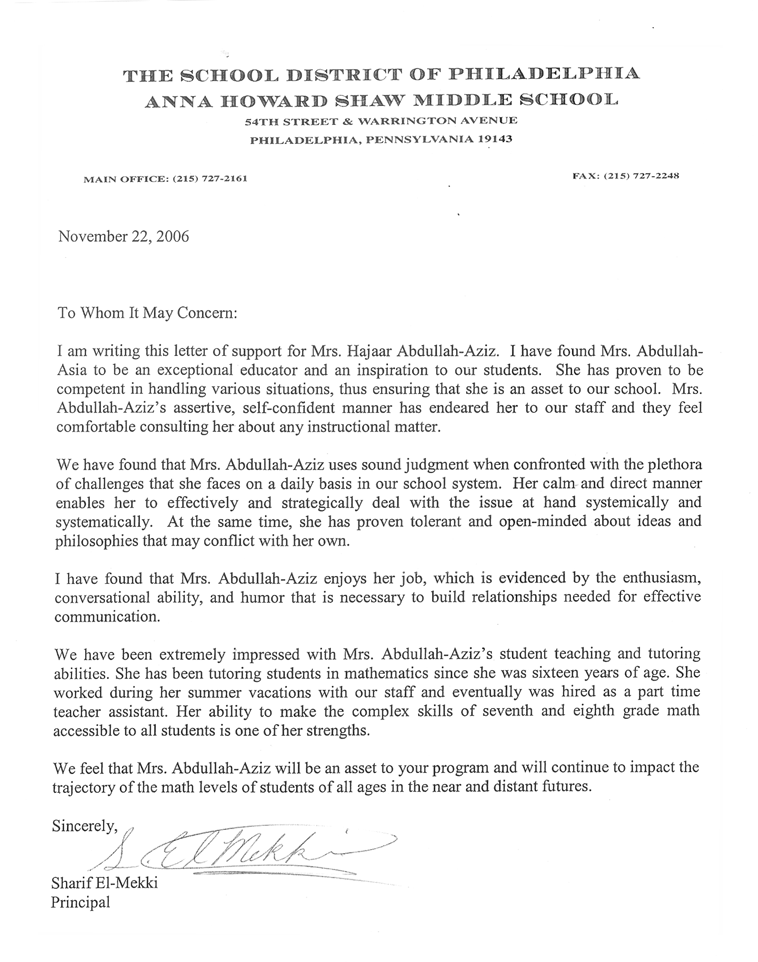Portfolio
Teacher Philosophy
![]()
Children as Learners
I believe that every child has a right to an education and a right to learn. No child should ever be denied access to education. All people should be given the opportunity to learn.
I believe that children learn through their past experiences, interactions with other people, and interactions with the environment. This belief comes from the constructivist point of view. "Vygotsky proposed that social interaction, especially dialog, between children and adults is the mechanism through which specific cultural values, customs, and beliefs are transmitted from generation to generation" (Essa, 1999, p.115). Piaget's point of view was that the children not only develop and learn through a series of developmental stages, but that the children learn by constructing their own knowledge as they come in contact with the environment (Seefeldt & Wasik, 2002).
I believe that children have very different ways in which they learn and that they represent that learning in very different ways. Howard Gardner has a Theory of Multiple Intelligences that suggests that there are seven different types of intelligences: linguistic, logical-mathematic, musical, bodily-kinesthetic, spatial, interpersonal, and intrapersonal. He says that children differ in the strengths of these seven intelligences (Allen & Catron, 1999). Each child has different strengths and talents. Every child should be given the opportunity to express their knowledge in the way that is most appropriate for them individually.
I believe that children learn best when they feel respected and valued. Children have a desire and need to be included and to feel like they matter. I believe that children's basic needs must be met before they can be fully successful at learning. Maslow's Hierarchy of Needs says thatpeople's needs have an order to them. If the needs on the top of the list are not met, then the needs lower on the list will not be able to be met and the person will not be able to function successfully (Boeree, 1998).
![]()
Role of the Teacher
I believe that the teacher is responsible for creating a classroom environment that is conducive to learning. The classroom should be free from distractions. The classroom should be set up with materials and manipulatives that are exciting and engaging to the children. In the Reggio Emilia curriculum model, Malaguzzi says that when it is set up correctly, the environment plays a large part in educating the child (Edwards, Forman, & Gandini, 1998).
I believe that the teacher is responsible for facilitating in the classroom and scaffolding the children so that their full potential of learning can be reached. The teacher is responsible for doing all that he or she can do encourage the children and guide them toward deeper learning and understanding. Vygotsky believed that it was the role of the teacher to scaffold the children and hold their hand as they strived towards a learning goal (Allen, et al., 1999).
I believe that the teacher is responsible for teaching in a way that each child's development and learning is the focus. NAEYC said that "adults are responsible for ensuring children's healthy development and learning" (Bredekamp & Copple, 1997, p.17).
I believe that the teacher is responsible for planning lessons that are interesting and engaging for the children and that allow them to construct their own knowledge. Piaget' s theory was called constructivist because he believed that “children construct knowledge for themselves rather than having it conveyed by an external source” (Essa, 1999, p. 111).
![]()
The School
I believe that the school should be a joint effort between school personnel, students, parents, and the community surrounding the school. In the Reggio Emilia curriculum approach, there is a community-based management team that includes parents, teachers, educational coordinators, school staff, and community members who’s purpose is to make decisions about the school (Edwards, et al., 1998).
I believe that the school should have a positive and welcoming atmosphere where everyone that enters will feel safe and secure. In the Reggio Emilia curriculum, Loris Malaguzzi has placed an importance on making the school have a welcoming atmosphere, one that has an “atmosphere of discovery and serenity” (Edwards, et al., 1998, p.167).
I believe that the school is responsible for teaching general moral principles such as citizenship, trustworthiness, dependability, fairness, etc. Children do not always get this basic moral training at home, so it is the responsibility of the school to instill those characteristics in the child. John Dewey says "it is the business of the school to deepen and extend his sense of the values bound up in his home life" (Dewey, 1897, p.78).
![]()
The Curriculum
I believe that the curriculum should be based on what is appropriate for the particular society the school exists in. Certain societal patterns exist within different societies. What is taught in schools should be a reflection of what is important in society. John Dewey believed that, "thesubject-matter of the school curriculum should mark a gradual differentiation out of the primitive unconscious unity of social life" (Dewey, 1897, p.78).
I believe that the curriculum should be developmentally appropriate and be presented in a way that each child can reach his full potential for learning. The curriculum should enhance development and learning. NAEYC has said that that the content of curriculum is determined by many factors such as social and cultural context, parental values, and the development level of each individual child (Bredekamp, et al., 1997).
I believe that the curriculum should be a balanced between teacher directed and child initiated so that the proper learning can occur. The child-initiated idea comes from the project approach, which is central in the Reggio Emilia curriculum, the idea is that if children come up with what they learn, then they will be more motivated and excited to participate in the learning (Beneke & Helm, 2003). The teacher directed idea comes from the Bereiter-Engelmann model that says that teachers are responsible for planning lessons that will help students master specific skills (Essa, 1999).
![]()
Classroom Management
I believe that prevention and guidance is the best classroom management tool. If children are exposed to good training and imitation of positive behaviors by the teacher and other students, then they are likely to repeat those positive behaviors. In the Social Learning Theory, Albert Bandura says that observation, imitation, modeling, and incidental learning play a large part in children's behavior (Allen, et al., 1999).
I believe that the demeanor of the classroom should be one in which love and respect are reciprocal between the teacher and student. The student will have better behavior if he or she feels respected by the teacher. Thomas Gordon, a humanistic psychologist suggested that if mutual respect and acceptance between adult and child exists, the child will "own" his or her behaviors and behave in a positive way (Essa, 1999).
I believe that the behavior management system in the classroom should be one where the idea of logical consequences is implemented. Students need to learn that there will be consequences when misbehavior takes place and that those consequences are directly related to the misbehavior. The idea of logical consequences comes from Rudolf Dreikurs, who said “if children are allowed to experience the natural outcome of their actions then a real learning experience takes place” (Essa, 1999, p.396).
![]()
General Statements
I believe that teachers have a very special calling and that they are accountable to society. Teachers have the responsibility to empower students to be life-long learners. Teachers need to model lifelong learning to students. As teachers learn new things, our philosophies of education will change. As new research comes along, and as I learn more about children, I am sure that my ideas will be influenced and that I will modify my practices to fit in with the new research. This constant learning and adapting will be a model to my students that life-long learning is very important.
References
Allen, J., & Catron, C.E. (1999). Early childhood curriculum: a creative play model. Upper
Saddle River, New Jersey: Merrill.
Beneke, S., & Helm, J.H. (Eds.) (2003). The power of projects: meeting contemporary
challenges in early childhood classrooms- strategies and solutions. New York:
Teachers College.
Boeree, C.G. (1998). Abraham Maslow. Retrieved April 12, 2003, from Shippensburg
University, Physchology Department Website:
http://www.ship.edu/~cgboeree/maslow.html
Bredekamp, S., & Copple, C. (Eds.) (1997). Developmentally appropriate practice in early
childhood programs. Washington, D.C.: NAEYC.
Dewey, J. (1897). My pedagogic creed [Electronic version]. The School Journal, 54(3), 77-80.
Edwards, C., Forman, G., & Gandini, L. (Eds.) (1998). The hundred languages of children:
the Reggio Emilia approach- advanced reflections. Greenwich, Connecticut: Ablex.
Essa, E.L. (1999). Introduction to early childhood education. Albany, New York: Delmar.
Seefeldt, C., & Wasik, B. (2002). Kindergarten: fours and fives go to school. Upper Saddle
River, New Jersey: Merrill
Resume
Education
- Masters in Math Education, May 2011
-
University at Buffalo, The State University of New York
Minor: Education
Overall GPA: 3.90/4.00 - Bachelors of Arts in Mathematics, December 2010
-
University at Buffalo, The State University of New York
Minor: Education
Overall GPA: 3.41/4.00 - Associates of Science in Mathematics, December 2007
-
Community College of Philadelphia, Philadelphia, Pennsylvania
Minor: Education
Overall GPA: 3.39/4.00 - Bachelor of Arts in Theology and Islamic Studies, January 2003
-
Al-Zahra University, Iran, Qum
Minor: Arabic
Major GPA: 92.11/100.00
Overall GPA: 83.60/100.00
Professional Experience
- Student Teaching
-
Williamsville North High School, Williamsville, NY (January 2011-March 2011)
- Demographics: 1500 students, affluent suburb of midsize city; Classes: Accelerated Pre-Calculus, Algebra II/ Trigonometry
- Developed and implemented lesson plans according to New York State Standards
- Designed corresponding math – art projects to reinforce mathematical concepts
- Incorporated various forms of technology to support instruction: ELMO, laptops, blogs, YouTube and Microsoft Office
- Assisted students in Academic Intervention Services (AIS)
- Participated in Marzanno Professional Development and 8th grade orientation
West Seneca West High School, West Seneca, NY (April 2011-May 2011)
- Demographics: 1500 students, middle class suburb of midsize city, Classes: Geometry, Algebra I, and Algebra I Inclusion
- Co-taught two sections of Algebra I Inclusion classes and implemented Individual Educational Plans (IEP) for 9 students
- Designed differentiated lessons for block scheduling and modified material for inclusion students
- Assessed and analyzed student growth with pre-unit and post-unit tests based on New York State performance indicators
- Executed Behavior Management Plan in line with single school culture to promote safe and productive learning environment
- Enhanced instruction and reinforced mathematical concepts with various forms of media, technology, activities, and projects
- Participated in Language and Culture Diversity Program and attended Motivating The Reluctant Student Professional Development
- Tutor, Math– Grade 8
-
Mastery Charter Shoemaker Campus, Philadelphia, Pennsylvania (March 2009)
- Provided intense math review sessions to 50 students for Pennsylvania System of School Assessment (PSSA) preparation program
- Contributed to students at Mastery Charter Shoemaker Campus achieving 87% proficiency in 2009 PSSA
- Teacher Assistant, Math- Grades 6, 7, and 8
-
Anna H. Shaw Middle School, Philadelphia School District, Philadelphia, Pennsylvania (September 2005-2008)
- Established a culture of high classroom expectations driven towards attaining academic achievement
- Assisted in the development and implementation of standard-based lesson plans, analyzed a variety of informal and formal data
- Monitored math benchmark exams and make up tests, graded assignments, logged grades in Parent Portal
- Collaborated with colleagues and administration to discuss student achievement, researched and presented best practices, led individual and group tutoring sessions
- Maintained frequent communication with parents and provided updates on student progress
- Afterschool Program Assistant – Elementary Grades K- 6
-
The Miquon Montessori School, Conshohocken, Pennsylvania (Summers 2003-2006)
- Assisted Program Manager in directing children in a manner that promotes safe behaviors as well as created interesting and engaging program activities for students in adherence to Montessori guidelines
- Served as a role model to young children by demonstrating high standards of personal and moral conduct
- Led activities, homework help sessions, managed junior staff, and provided supervision and support for educational trips
Professional Development
In-Service Workshops Attended
- Single School Culture (Academic/Behavioral)
- NASA Explorer School training
- Success for All
- Everyday Mathematics
- Anti-bullying Seminars
- Building Classroom Discipline
- Health Safety in the School
- Technology in the Classroom
- Staff training for Edison Schools
School Committees
Anna H. Shaw Middle School, Philadelphia School District, Philadelphia, Pennsylvania (2005-2008)
- Data Analysis Team (2007)
- Inclusion Team (2006)
- Math Team (2005-2008)
Honors
- Shaw Middle School Perfect Attendance
- Shaw Middle School Dedication Award
- Certificate Edison Teaching Academy
- Author for The Black Stone Newspaper
- Phi Theta Phi Honor Society, Rho Upsilon Chapter
Skills
- Software: Microsoft Excel, Microsoft PowerPoint, Microsoft Word, Windows Movie Maker, Adobe Acrobat, Power Grade
- American Red Cross certified in adult and child CPR and first aid procedures
Language Skills
- Fluent in English, Persian and Arabic.
Travel
Extensive personal and educational travel:
- Iran
- United Kingdom
- France
- Germany
- Lebanon
- Turkey
- Jordan
Interests
- Vollyball
- Track & Field
- Horseback Riding
- Gardening
- Volunteering
- Research
References
- Dr. Deborah Moore-Russo
Assistant Professor, Learning and Instruction -
University at Buffalo
Graduate School of Education
566 Baldy Hall
Buffalo, NY 14260
(716) 645-2455 ext 1266
dam29 [at] buffalo.eduDeborah Moore-Russo has been my advisor throughout my masters program at University at Buffalo’s graduate school of education. I have also been her student for the following courses:
- School Math Advanced Standpoint 2 – Advanced Geometry
- Teaching math grades 5-12
- Educational technology for secondary math students
This reference can speak to my performance in the classroom.
- Sharif El-Mekki
Principal -
Mastery Charter School
Shoemaker Company
5300 Medra St
Philadelphia, PA 19131
(215) 370-7962
sharif.elmekki [at] masterycharter.orgSharif El-Mekki has served as principal of Anna-Howard Shaw Middle School where I was a middle school math co-teacher. He currently serves as principal at Mastery Charter Shoemaker Campus.
This reference can speak to my professionalism and work ethic.
- Kristina Walrath
7th grade lead teacher -
Mastery Charter School
Shoemaker Company
5300 Medra St
Philadelphia, PA 19131
kristina.walrath [at] masterycharter.orgKristina Walwrath holds position of lead teacher for 7th grade academy at Mastery Charter Shoemaker Campus and directly oversees student assistants who prepare students for standardized testing over winter and spring breaks.
This reference can speak to my professionalism and teamwork.
Letters of Recommendation

December 12, 2008
To Whom It May Concern,
Haajar Aziz was enrolled in my Learning and Instruction 350, Introduction to Education, undergraduate class during the fall semester. I am pleased to be able to provide a letter of recommendation for her. She truly excelled in many areas in my classroom. Haajar was an enthusiastic student in my classroom. She was pleasant and well mannered. Her grades were outstanding and she was a hard working individual with the potential to become an excellent teacher. During her lesson presentation in our classroom, she exhibited poise and confidence. There was evidence of planning, organizing in the execution of her well thought out lesson. She was relaxed in front of her 24 other classmates. Haajar seems to have a natural talent for teaching as exhibited in her classroom presentation. As I observed her teaching, I could see her teaching abilities beginning to emerge. Haajar contributed to classroom discussions in a positive and mature manner. I enjoyed our discussions during and after class. I would not hesitate to recommend her for continued education or future employment.
I hope you will give Haajar the consideration she deserves when reviewing her application and I feel confident in sending you this recommendation.
Sincerely,
Diane M. Calleri
Diane M. Calleri
Adjunct Professor
Graduate School of Education
Graduate School of Education
375 Baldy Hall
Buffalo, NY 14260

Thoughts on Standards
Mathematics is intended to give students an ability to solve problems, to communicate their ideas and strategies, and to apply their skills in other disciplines. Students are expected to understand and investigate mathematical concepts, to use mathematics in real-world situations, and to select and use appropriate technology to model and study mathematical processes. New York State and the National Council of Teachers of Mathematics both have standards to guide teachers in helping students to use mathematical methods to learn about many aspects of math including: algebraic representation, geometry, measurement, data analysis, and much more.
It is important for all students to have a conceptual framework, knowledge of procedures, a sense of reasonable results, and a confidence to apply their skills. These standards help guide teachers as they strive to provide benchmarks to define expectations for students' knowledge, skills, and abilities along a developmental continuum in different areas.
I have come to see the value in both sets of standards and believe that they should be used in conjunction with one another to provide students with the most well rounded education in mathematics since each set of standards indicate what all students should know, understand, and be able to do in a specific areas.